The Nukeproof Megawatt 297 might be the brand’s first, and currently only, electric mountain bike, but it's an exceptional machine that takes our inaugural eMTB Bike of the Year title for 2022.
With Goldilocks geometry figures, comfortable and efficient climbing performance, a powerful Shimano motor and well-specced build kit, the Megawatt excels on just about any terrain you point it towards.
This version, the Factory, sits at the top of a three-model range. Below it is the Elite and then the Comp, each £1,000 cheaper than the higher-specced version above it.
The Megawatt name indicates this is an electrified version of the Nukeproof Mega – a bike with an impressive race-proven pedigree, ridden by legendary Aussie DH and enduro rider Sam Hill.
Unsurprisingly, it’s designed for enduro-style riding, and has been ridden at Enduro World Series ebike races. It has 170mm of rear-wheel travel, driven by a Horst-link suspension design, and runs on mixed wheel sizes, with a 27.5in at the rear and a 29in wheel at the front.
It’s built around Shimano’s EP8 motor, with 85Nm of torque powered by Shimano’s 630Wh battery concealed within the down tube. This model is fitted with top-of-the-range Fox Factory dampers with a 38 fork and Float X2 shock.
Nukeproof Megawatt 297 Factory frame and suspension
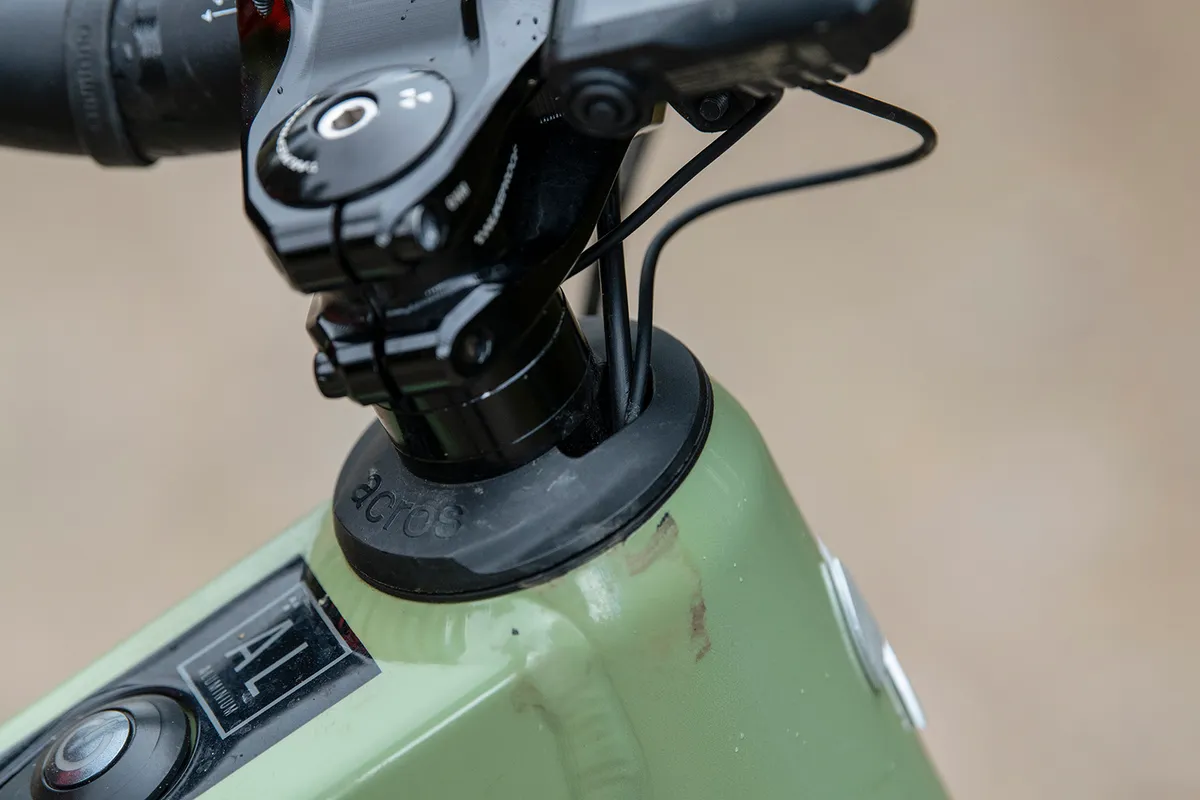
Made from 6061 aluminium that’s been hydroformed to shape the frame tubes, the Megawatt features a new one-piece cast bottom bracket shell to house the motor.
The down tube has also been redesigned with an open underside to allow easy access to the removable battery, and is sealed with a full-length armoured cover. Likewise, armour encases the motor.
All cables are routed internally via the top headset race, which gives a clean finish and does away with cable ports in the head tube or down tube.
Details include chunky in-built moulded chain-slap protection along the chainstay, accessory mounts on the underside of the top tube and a bottle cage mount beneath the rear shock, but with only enough space for a 500ml bottle. All pivots run on Enduro Max bearings for increased longevity.
The Megawatt is available in five sizes from small to XXL. Each of those size runs 'mullet' wheels, with a 27.5in rear and 29in front.
Suspension kinematics
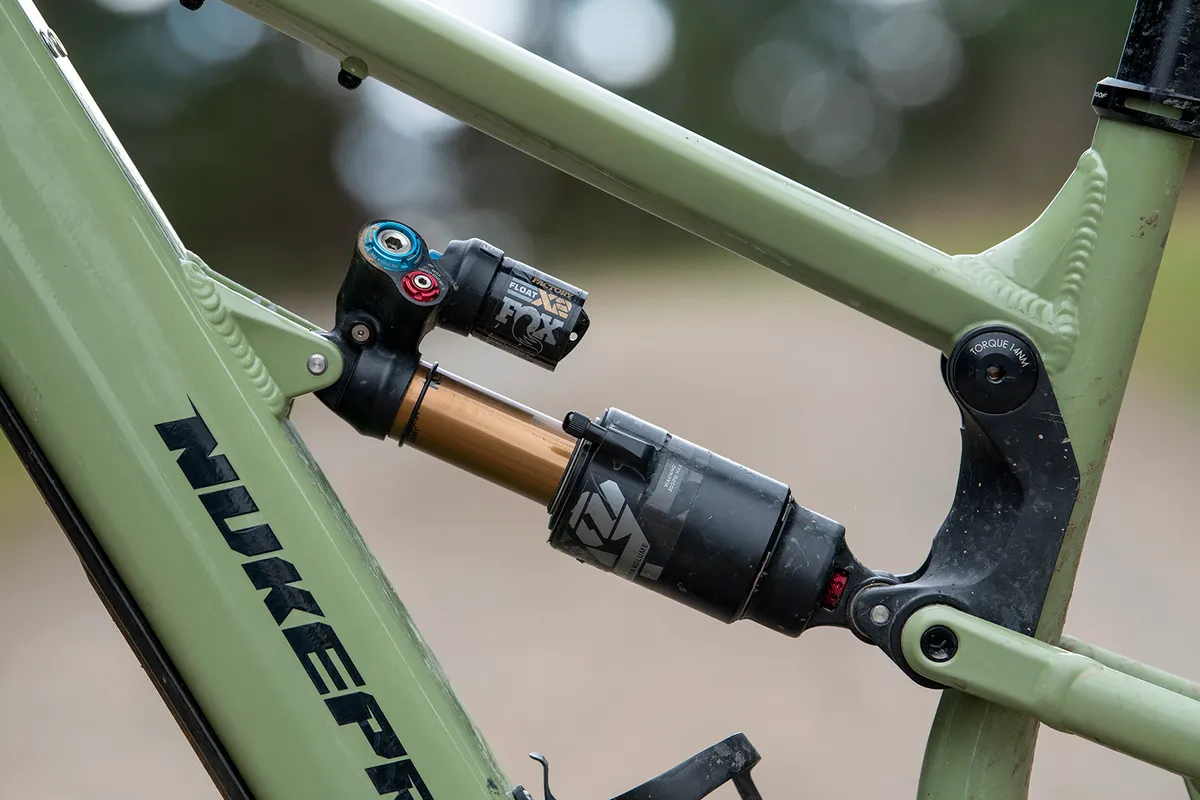
The Megawatt’s four-bar Horst-link design is based on Nukeproof’s V4 linkage, the same design used on the Mega.
Nukeproof claims it has tuned the suspension to have a supple beginning stroke to absorb small bumps, and mid-stroke ramp-up for support and more bottom-out resistance.
Thanks to the mid-stroke support, Nukeproof claims a rider can run between 30 and 35 per cent sag, depending on their needs.
According to Nukeproof’s own leverage ratio graph, the Megawatt is 21.687 per cent progressive throughout its travel, which is around the average figure for bikes in this category. This makes it well-suited to air shocks with adjustable air springs.
At sag in the easiest gear, the Megawatt has roughly 99 per cent anti-squat. This means it will pedal relatively neutrally, where pedalling forces will neither extend or compress the suspension.
In terms of anti-rise, the Megawatt has 105 per cent at full travel, 92.5 per cent at sag and 20 per cent at bottom-out. This means the suspension is more likely to extend rather than compress when a rider brakes, which can make the suspension feel more active and supple.
Nukeproof Megawatt 297 Factory battery and motor
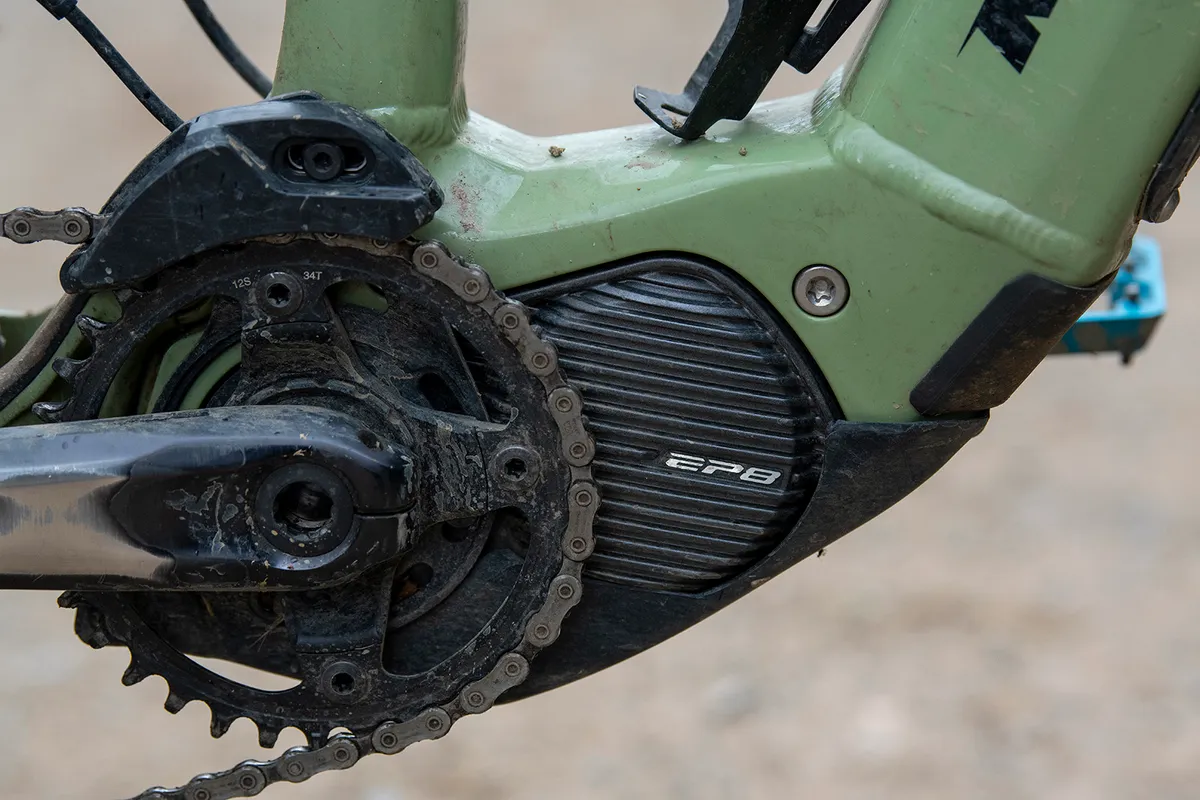
Nukeproof has specced Shimano’s EP8 motor and 630Wh battery on the Megawatt (the lowest-spec Comp model uses a 504Wh battery).
The drive unit boasts an 85Nm torque figure and 250W of power. It’s specced with the latest colour EM800 display and EM800-L switch.
The EP8 features three customisable assistance modes, and the Shimano e-Tube Project smartphone app can be used to tune assist levels.
Nukeproof Megawatt 297 Factory geometry
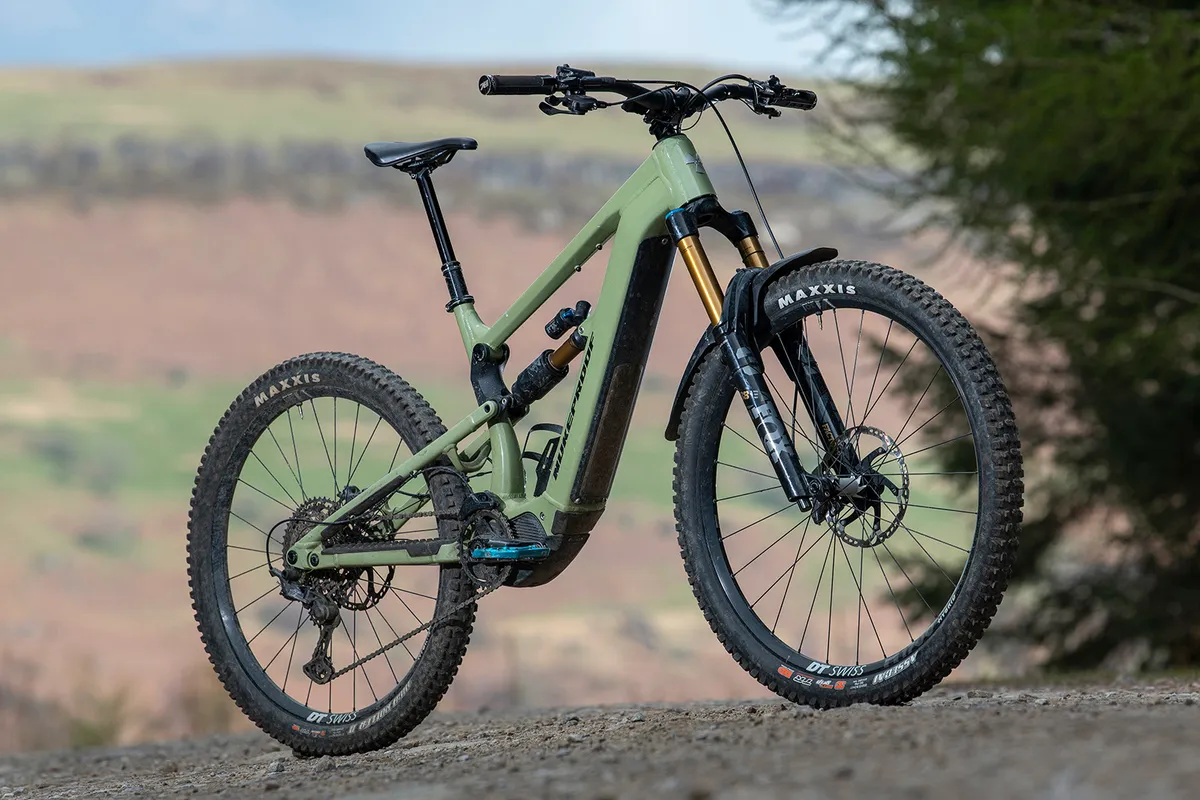
Featuring Nukeproof’s ‘saddle offset’ design, the Megwatt’s seat tube angle gets steeper as frame sizes increase, which helps to optimise the seated riding position, the brand claims, particularly in terms of climbing comfort and efficiency.
Its geometry figures are inspired directly by the Mega, but there are some deviations, including increased stack height and longer chainstays.
The size-large bike I tested headlines with a 475mm reach, a 78-degree seat tube angle, 1,263.69mm wheelbase and 442mm chainstays. It has a 64-degree head tube angle and a 345mm bottom bracket height, combined with a high 645.24mm stack.
While these numbers aren’t massively progressive – especially compared with the Whyte E-180 RS – they are enduro-ready thanks to their race-proven pedigree, where it looks like they will work cohesively to improve the bike’s ride.
| | S | M | L | XL | XXL |
|---|---|---|---|---|---|
| Seat angle (degrees) | 77.5 | 77.5 | 78 | 78 | 78 |
| Head angle (degrees) | 64 | 64 | 64 | 64 | 64 |
| Chainstay (mm) | 442 | 442 | 442 | 442 | 442 |
| Seat tube (mm) | 380 | 410 | 440 | 470 | 500 |
| Top tube (mm) | 577.05 | 597.05 | 612.15 | 634.06 | 663.21 |
| Head tube (mm) | 115 | 115 | 120 | 130 | 140 |
| Fork offset (mm) | 44 | 44 | 44 | 44 | 44 |
| Trail (mm) | 136.17 | 136.17 | 136.17 | 136.17 | 136.17 |
| Bottom bracket height (mm) | 345 | 345 | 345 | 345 | 345 |
| Wheelbase (mm) | 1221.5 | 1241.5 | 1263.69 | 1288.07 | 1312.46 |
| Standover (mm) | 734.8 | 731.06 | 730.01 | 732.88 | 732.69 |
| Stack (mm) | 640.74 | 640.74 | 645.24 | 654.23 | 663.21 |
| Reach (mm) | 435 | 455 | 475 | 495 | 515 |
Nukeproof Megawatt 297 Factory specifications
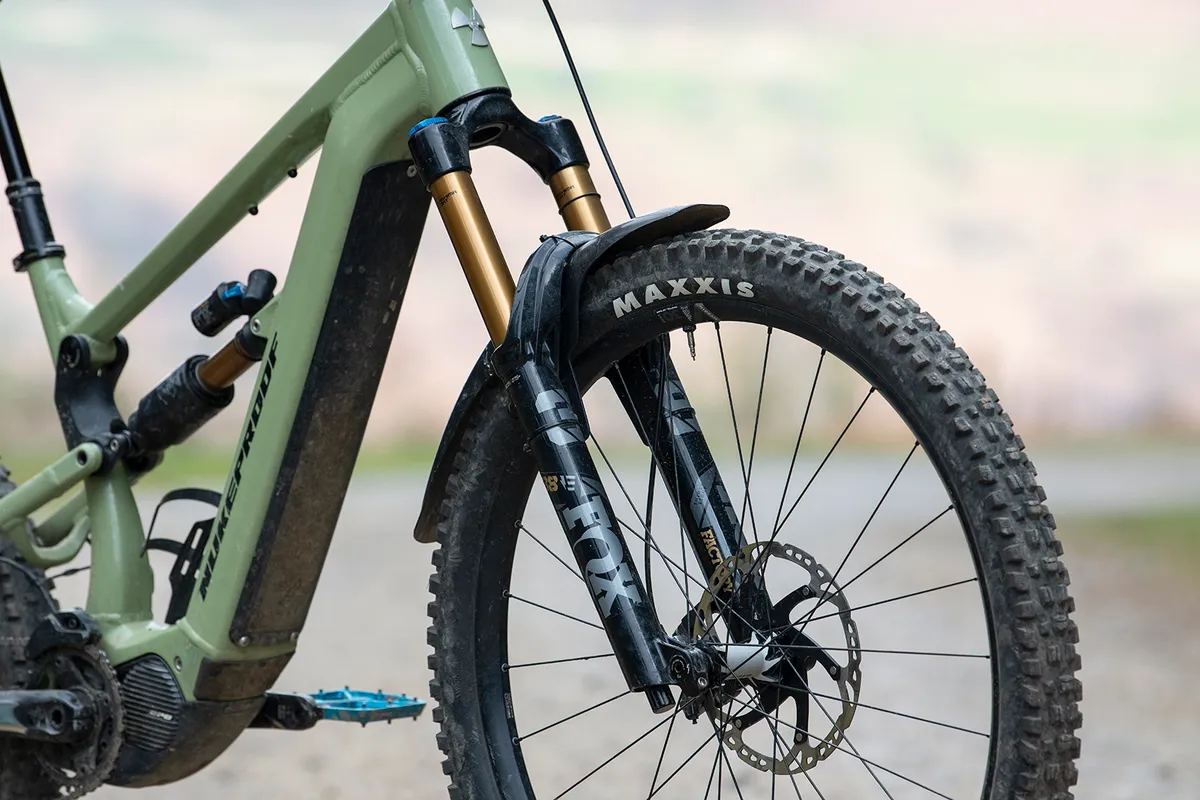
This top-spec Megawatt is fitted with a host of parts you’d be hard-pressed to improve on, including the venerable Fox 38 170mm-travel fork and metric-sized Float X2 Factory shock alongside Shimano’s XT M8100 drivetrain and four-piston brakes with 203mm rotors.
The DT Swiss H 1700 Spline 30 wheelset is wrapped in Maxxis rubber, an Assegai 29x2.5in 3C MaxxGrip compound with DoubleDown casing at the front and a High Roller II 27.5x2.5in 3C MaxxTerra compound DoubleDown rear tyre.
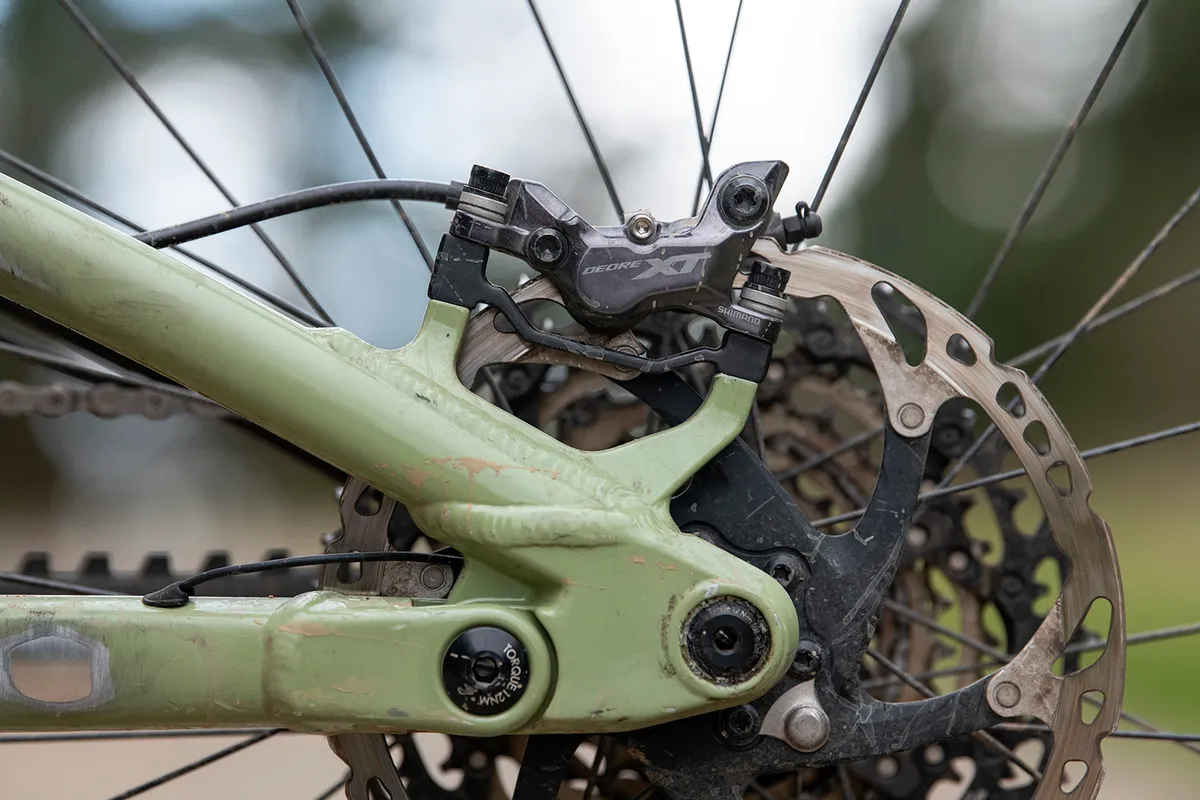
It has a Bikeyoke Divine dropper post with 160mm of travel, and the rest of the finishing kit, including bar, stem, grips and saddle, is all Nukeproof branded.
My large test bike without pedals weighed 24.52kg.
Nukeproof Megawatt 297 Factory ride impressions
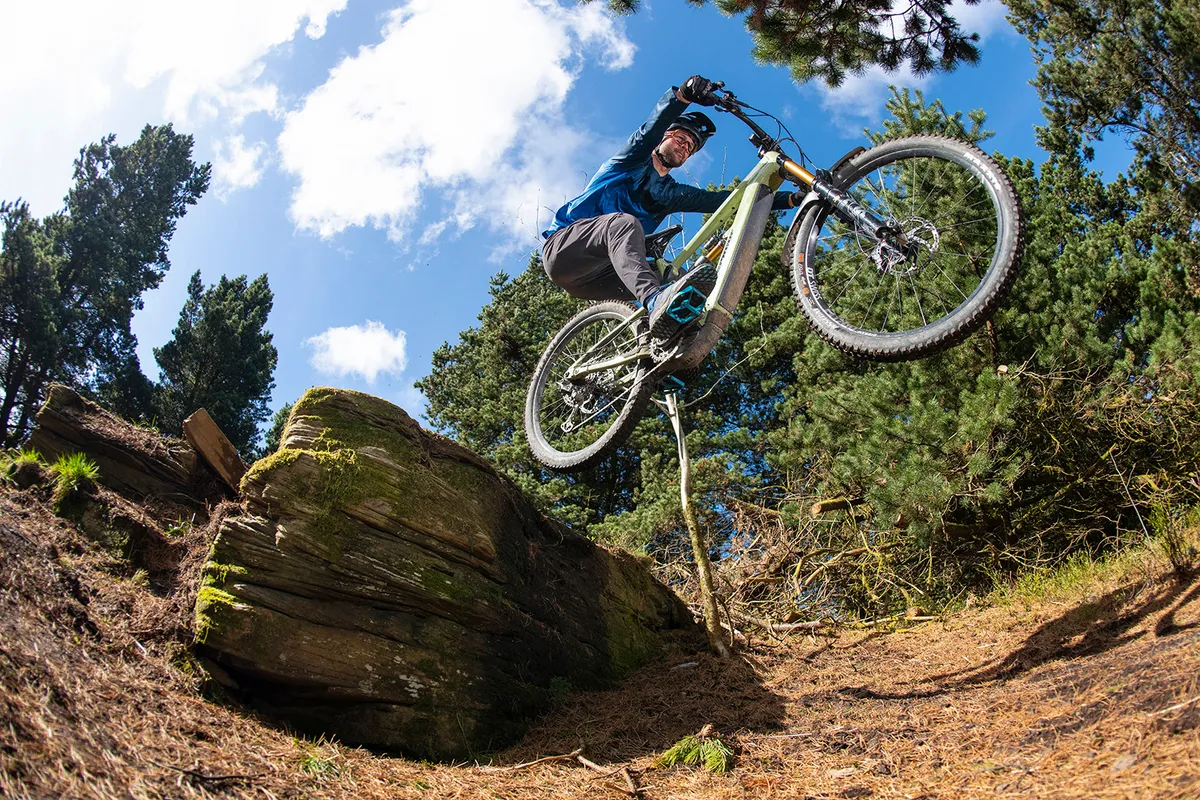
I tested the Nukeproof Megawatt on the same trails used for the UK’s round of the Enduro World Series in Scotland’s Tweed Valley, where Sam Hill rode this exact bike during the competition.
Conditions ranged from seriously wet to mid-winter snow and springtime dust.
Nukeproof Megawatt 297 Factory setup
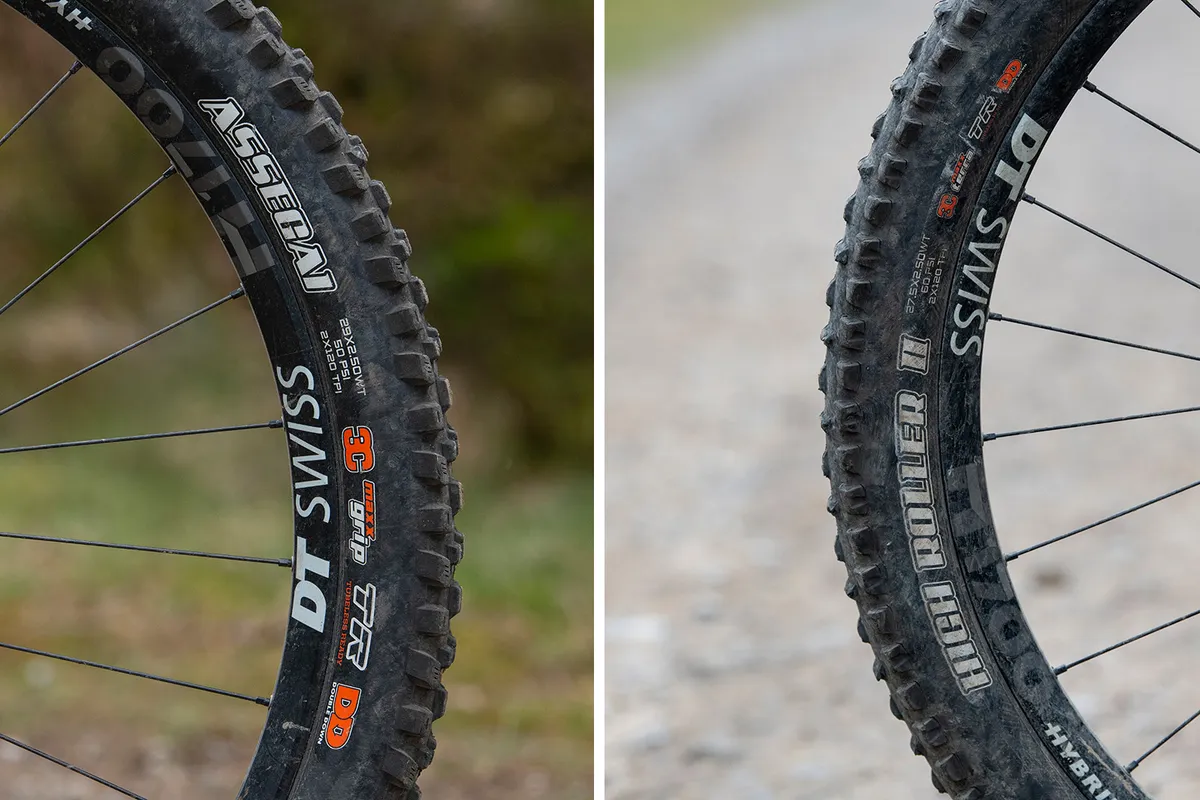
I inflated the Fox 38 fork’s spring to 98psi, installed three volume-reducer spacers, and set the rebound and compression adjustments to fully open. During the test period, I increased spring pressure to 102psi, giving me 29mm or 17 per cent sag.
The rear shock had two volume spacers installed. I initially ran 178psi in the air spring, but this felt too soft when climbing or in high-load scenarios.
Instead of increasing compression damping – which felt like it choked the suspension’s action – I added more air spring pressure until it had enough support, settling on 205psi. This gave me 16mm or 25.6 per cent sag, which is less than Nukeproof recommends.
Although I inflated the tyres to suit the conditions and trails I was riding, thanks to DoubleDown casings front and rear, I ran lower pressures than possible with less sturdy tyres. This improved grip and feel.
Nukeproof Megawatt 297 Factory climbing performance
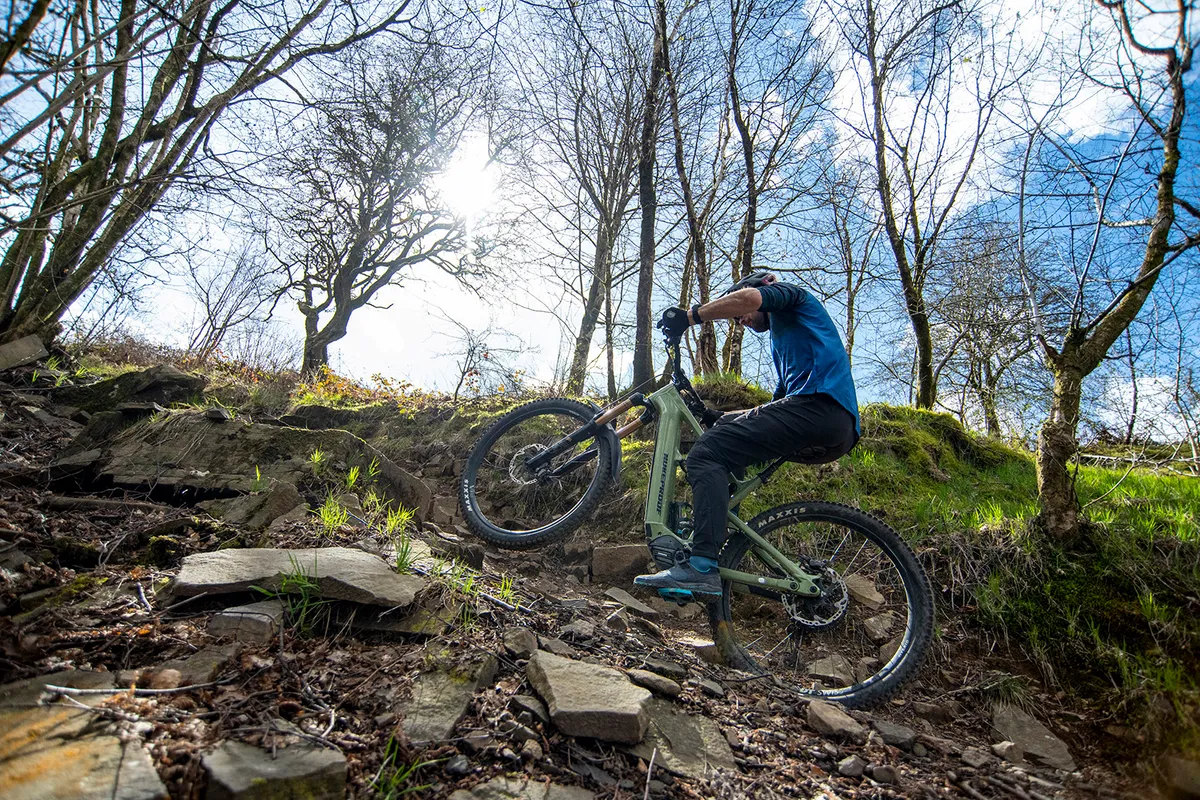
Nukeproof’s Megawatt is an impressive climber in all respects.
Its steep seat tube angle positioned my hips over the bottom bracket rather than behind it, improving pedalling efficiency and enhancing comfort and bike control.
The seat tube angle, low bottom bracket and generous stack height combined to create an upright and relaxed seated position, where most of my weight was transferred into the bike via my sit bones, rather than through my hands. This helped reduce fatigue and also increased control.
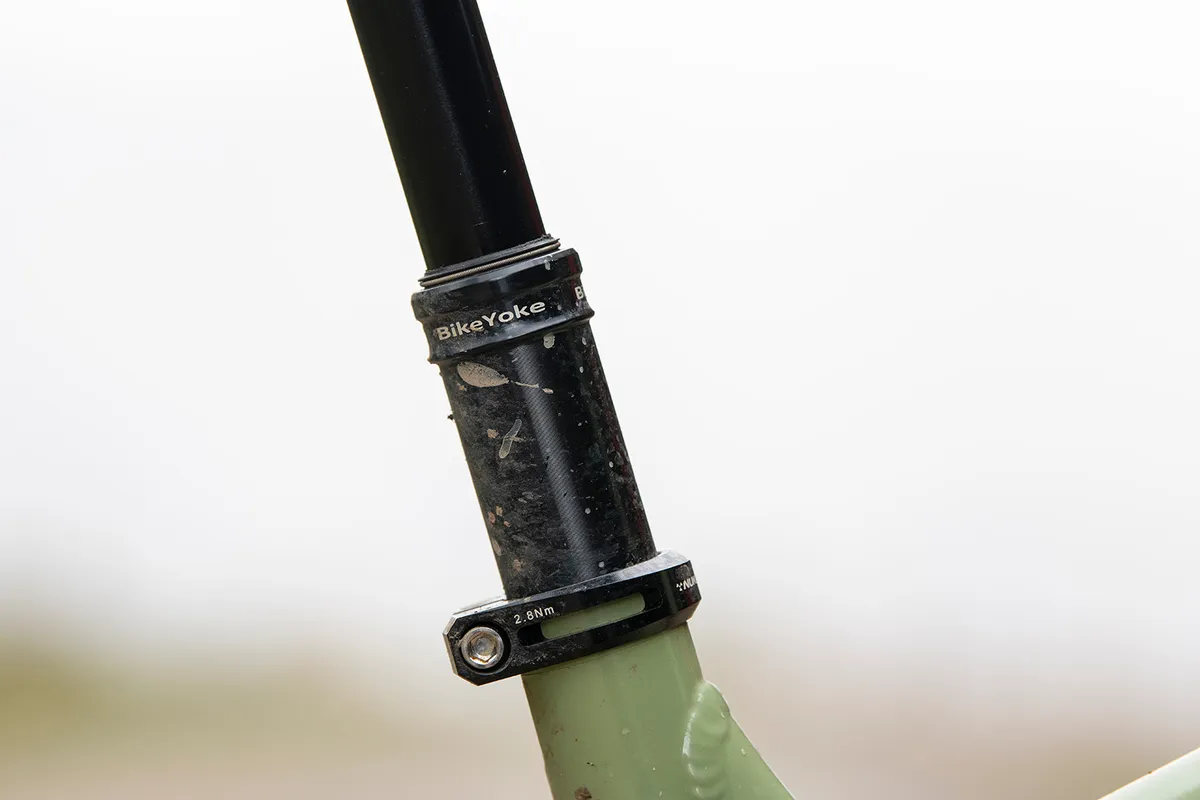
The centralised riding position meant that feeding traction and drive into the High Roller II rear tyre’s aggressive tread pattern was incredibly easy through bodyweight, without needing exaggerated movements.
Front-wheel lift on particularly steep ascents was also entirely controllable, and only the most extreme gradients required slight forward weight shifts to keep the wheel on the ground.
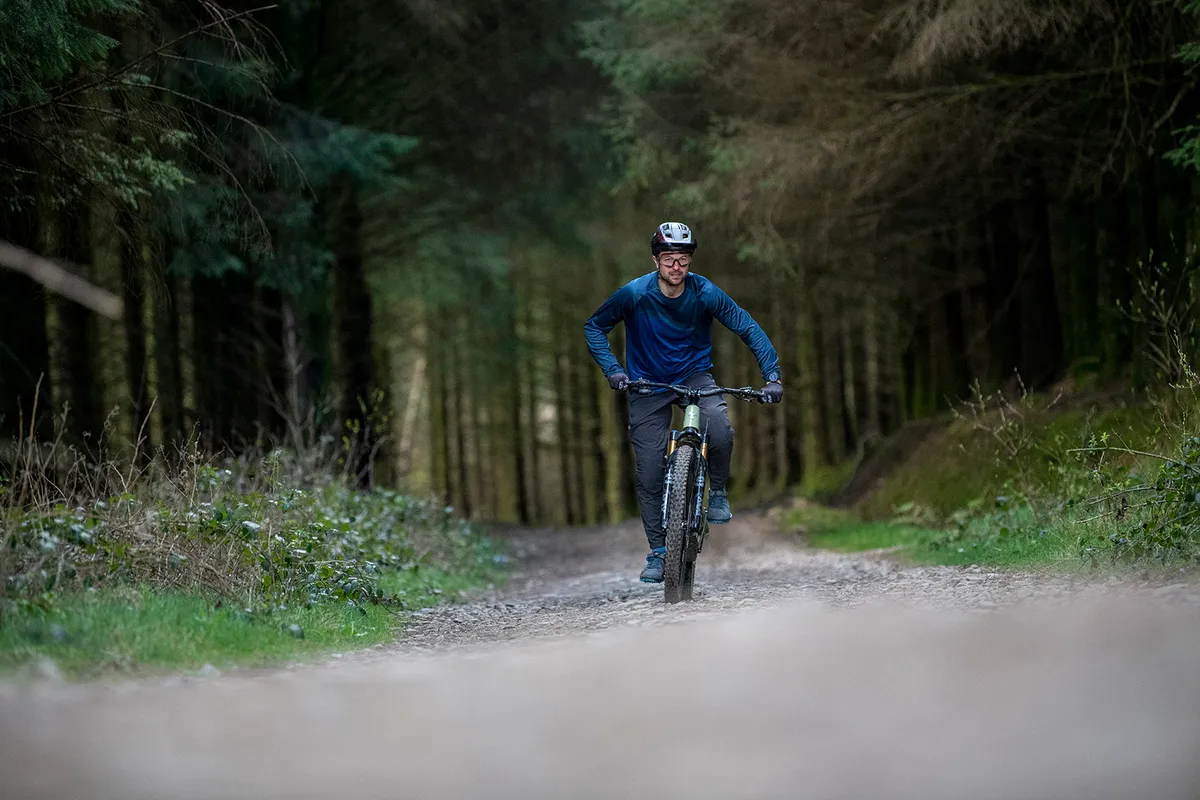
This meant less energy was consumed, making sure the bike’s wheels were providing traction and steering control, because the natural riding position was doing most of the hard work.
Adding to the Megawatt’s climbing performance was the super-supple and massively sensitive rear suspension. Its fluttery, bump-absorbing action meant comfort and traction were impressive, neutralising worn trail-centre surfaces, and rendering technical slick or chunky climbs rich in grip, with very limited wheelspin.
Thanks to the rear suspension’s leverage rate, it didn’t easily compress through its mid-stroke. This helped preserve its dynamic geometry on steeper climbs, where my weight was pivoted rearwards.
The cherry on the Megawatt’s icing was its impressively comfortable Horizon Enduro saddle, which is what you need because ebikes encourage longer periods of seated riding.
Battery life
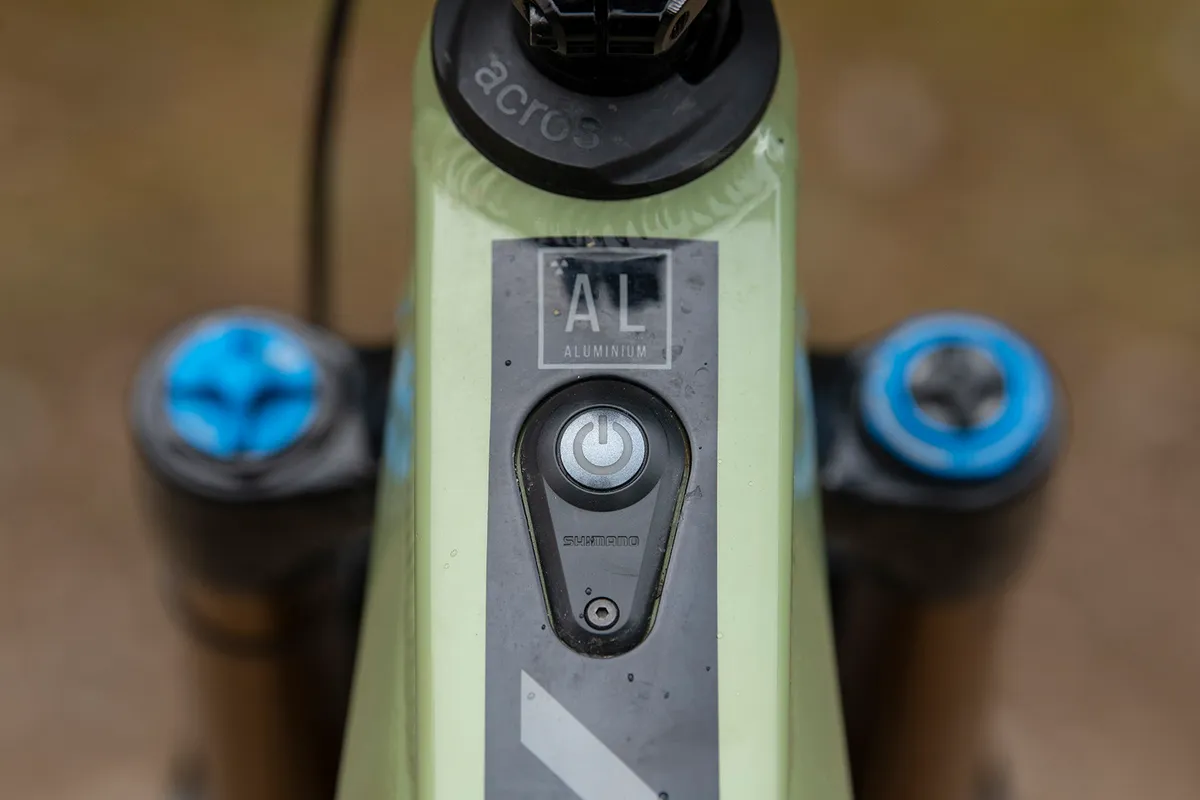
Shimano’s EP8 motor is impressively frugal given the power it offers. Although range varied significantly depending on the weather and riding conditions, in Eco mode it was possible to exceed 2,000m of climbing without too much bother.
In Trail mode, its ascending potential was between 1,400m and 1,700m, while in Boost this dropped to between 1,200m and 1,400m.
While not as powerful as the Bosch or Specialized, this Shimano motor offers a great compromise between power and battery life. There are scenarios, such as at higher pedalling cadences or increased rider inputs, where it can feel throttled.
Arguably, in its Boost assistance mode, the EP8 feels best at lower cadences, where it provides plenty of power.
Nukeproof Megawatt 297 Factory descending performance
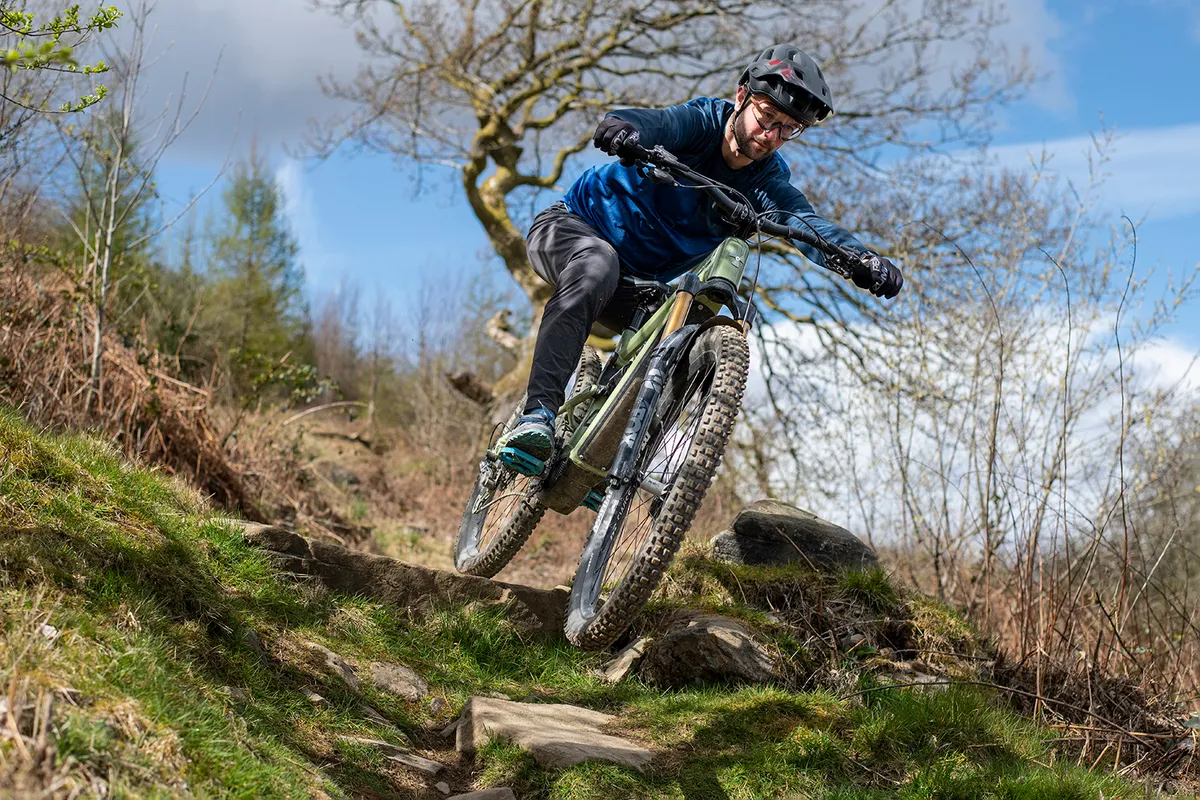
Balancing fun and stability is a tricky thing to do for a bike manufacturer because these two qualities tend to need two different types of geometry. Somehow, however, the Megawatt manages to do just this.
The ingredients for this perfect balance come from the combination of the bike’s geometry, spec, suspension kinematics and weight.
In terms of the geometry, the stack and bottom bracket heights combine to create a robust-feeling hand-to-feet relationship. This riding position made me feel truly ‘in’ the bike, sitting behind rather than on top of the handlebars, with my centre of gravity nice and low.
Leaning the bike over into turns or hammering through rough terrain felt confidence-inspiring and natural, requiring limited weight shifts.
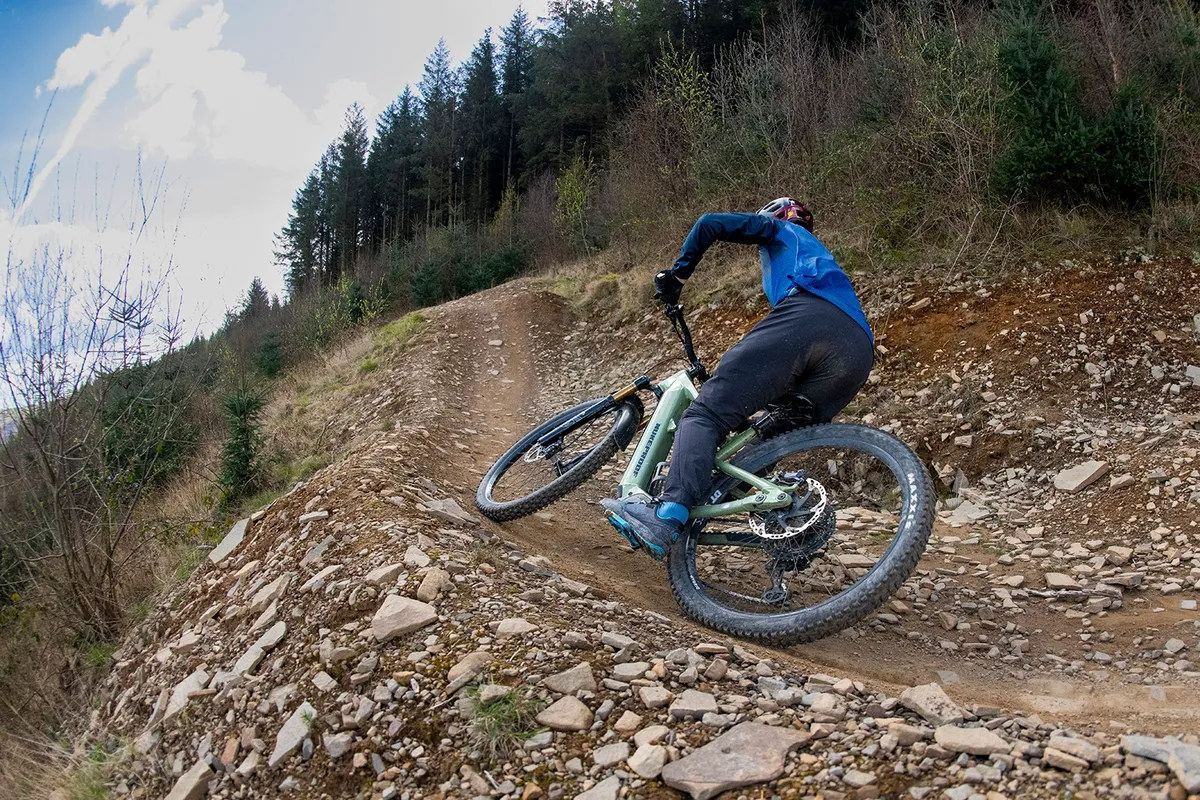
Holding the tyres on their edges around bermed or flat turns felt inspired, because grip was plentiful and marvellously easy to tap into. The Assegai MaxxGrip front tyre helped by providing incredibly predictable traction at massive lean angles.
Its eagerness to turn made the Megawatt addictive to ride, but also helped it defy its headline weight figure.
Quick direction changes were easy to effect without huge shifts in weight, making riding tight or twisty trails hilariously good fun.
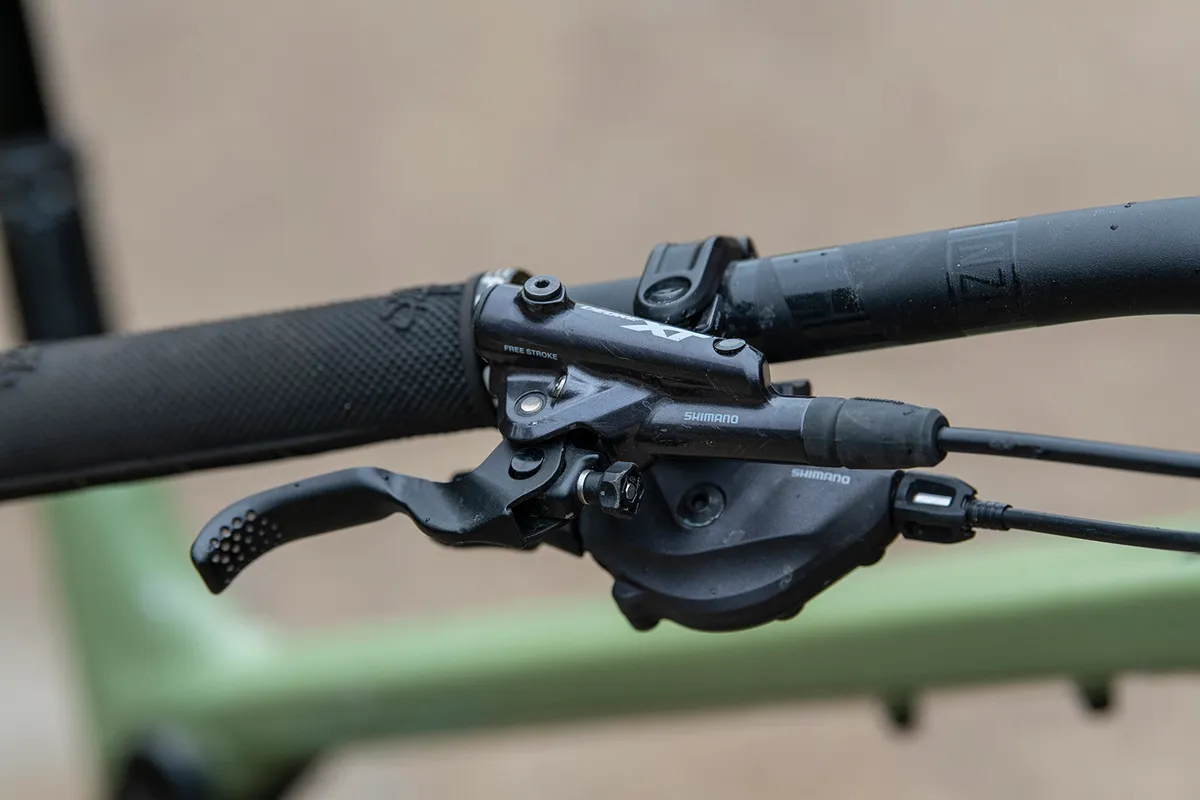
The 442mm chainstay figure clearly adds to this versatility and ‘flickiness’ without compromising stability at the same time.
The high stack meant I was able to load the front wheel with confidence, improving traction and control on all types of terrain, but it also contributed to how agile the bike felt.
Because the front wheel could be loaded so heavily, it made the rear end go light and soft on the ground, where drifting, braking traction or whipping it around was way more composed and calmer than it would be on most other ebikes.
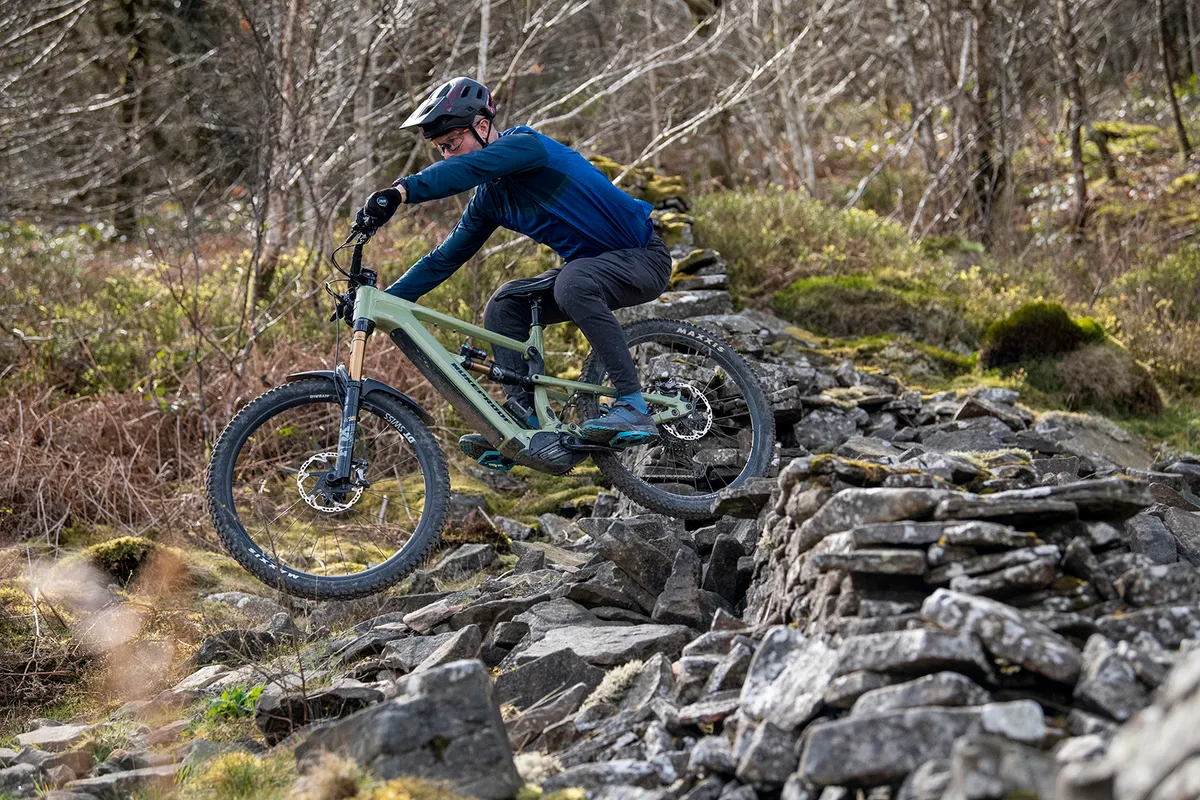
Doubling down on its playfulness was the chunky amount of suspension progression, where the mid-stroke had plenty of support to provide pop on small take-offs and generate speed in compressions.
The start of its travel was incredibly smooth, absorbing smaller bumps well and helping generate lots of grip, assisted by the favourable sprung-to-unsprung mass ratio seen on the majority of ebikes.
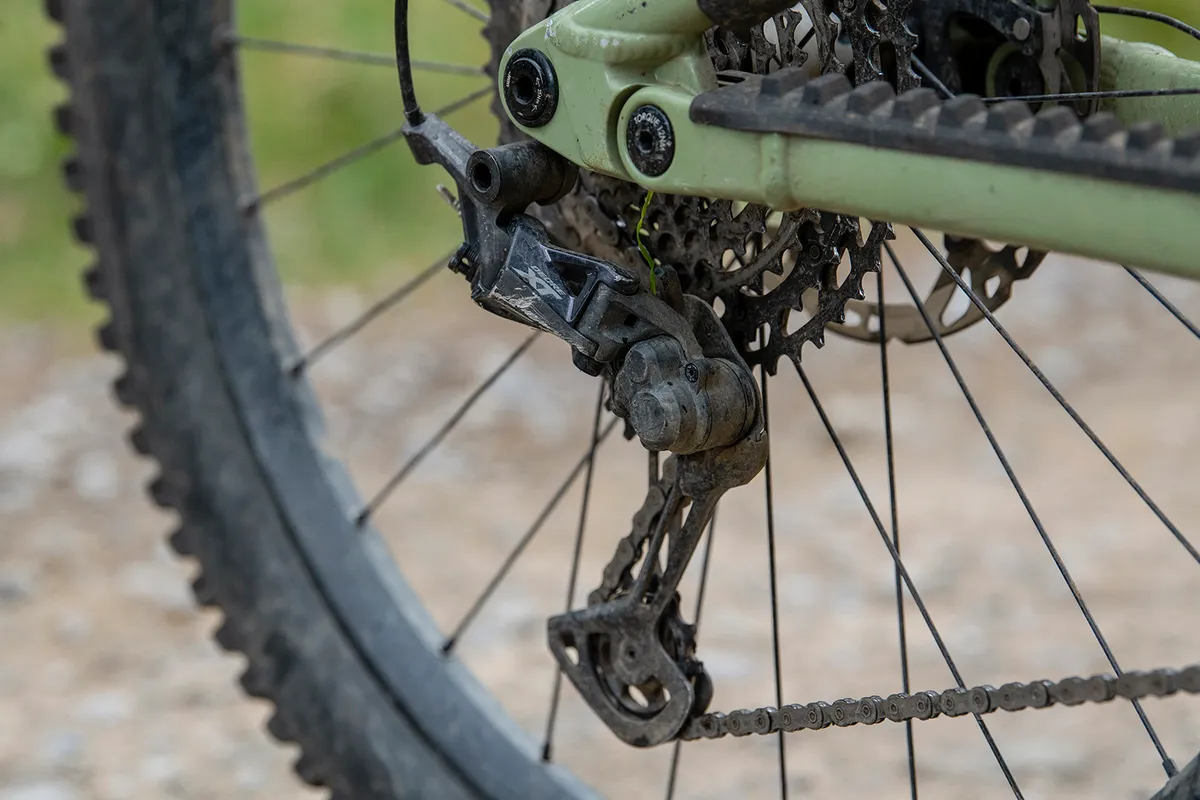
At bottom-out, there was plenty of control, slowing the compression down to a soft landing, rather than harsh full-travel moments.
One disadvantage of the low bottom bracket, though, was pedal strikes. When combined with the wide ebike Q-factor (which increases the horizontal distance between the pedals), the bottom-bracket height did require a small recalibration to stop pedal strikes while descending or pedalling over rough terrain.
How does the Nukeproof Megawatt 297 Factory compare?
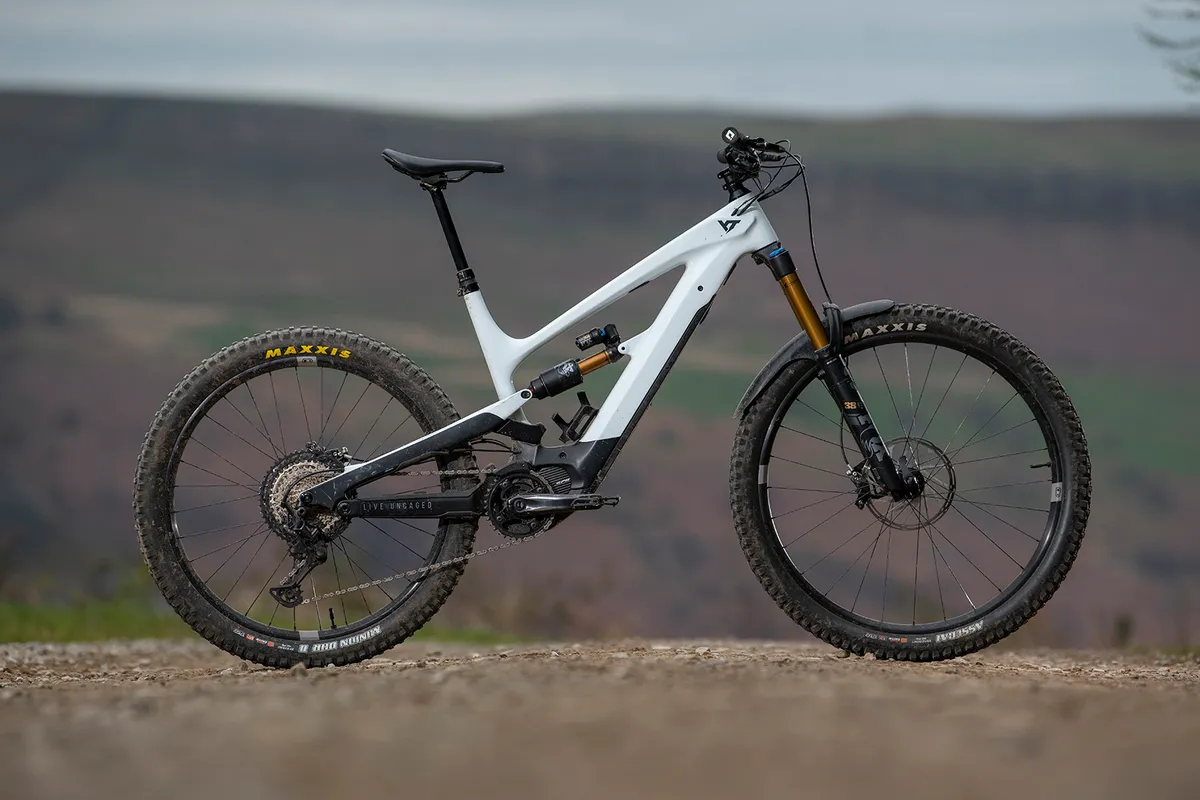
The Megawatt and YT Decoy were very similar on the descents in terms of how easy they were to ride from the get-go, both riding naturally and offering an exhilarating feel in the turns.
The two bikes' key geometry figures are very close but the Megawatt’s slacker head tube angle and more generous reach extend its descending capabilities beyond the Decoy’s, allowing more speed and stability. On the climbs the gap between them is much bigger, where the Nukeproof jumped ahead in terms of comfort, control and battery range.
Compared with Whyte’s E-180 RS, meanwhile, the Megawatt couldn’t feel any more different. Riding the two bikes back-to-back revealed their unique personalities.
The Whyte was keen to plough its way down a trail, holding its line with conviction, which made it quicker than the Megawatt, but also slightly less fun.
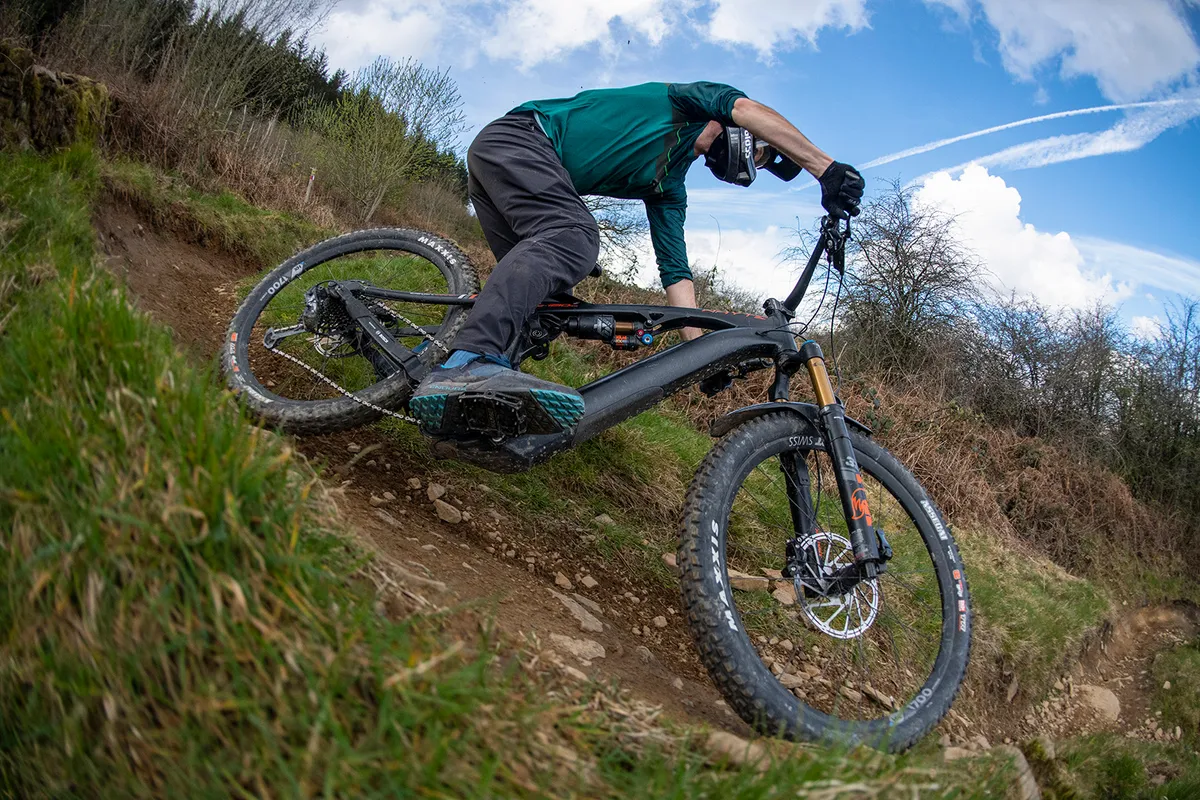
In comparison, the Megawatt was much keener to flick from one side of the trail to the next and, although not as fast, it always put a smile on my face.
In terms of range, the Bosch and EP8 motors are well-matched in Eco mode. Bump the Bosch up to higher assistance modes and it was less frugal than Shimano’s unit, but it does feel more powerful with that increased electrical consumption.
Deciding which is the best bike is almost impossible because they’re so different. The Megawatt is more fun to ride and suits a wider range of trails, but isn’t as fast or stable as the Whyte. The type of riding you do and your riding style will play a large part in choosing which is best suited to your needs.
Nukeproof Megawatt 297 Factory bottom line
The Megawatt combines super-smooth, long-travel rear suspension with confidence-inspiring but impressively balanced geometry.
In addition to the chunky but not excessive headline weight, it inspires calm and composure where it’s needed, but also elements of playfulness in tighter terrain.
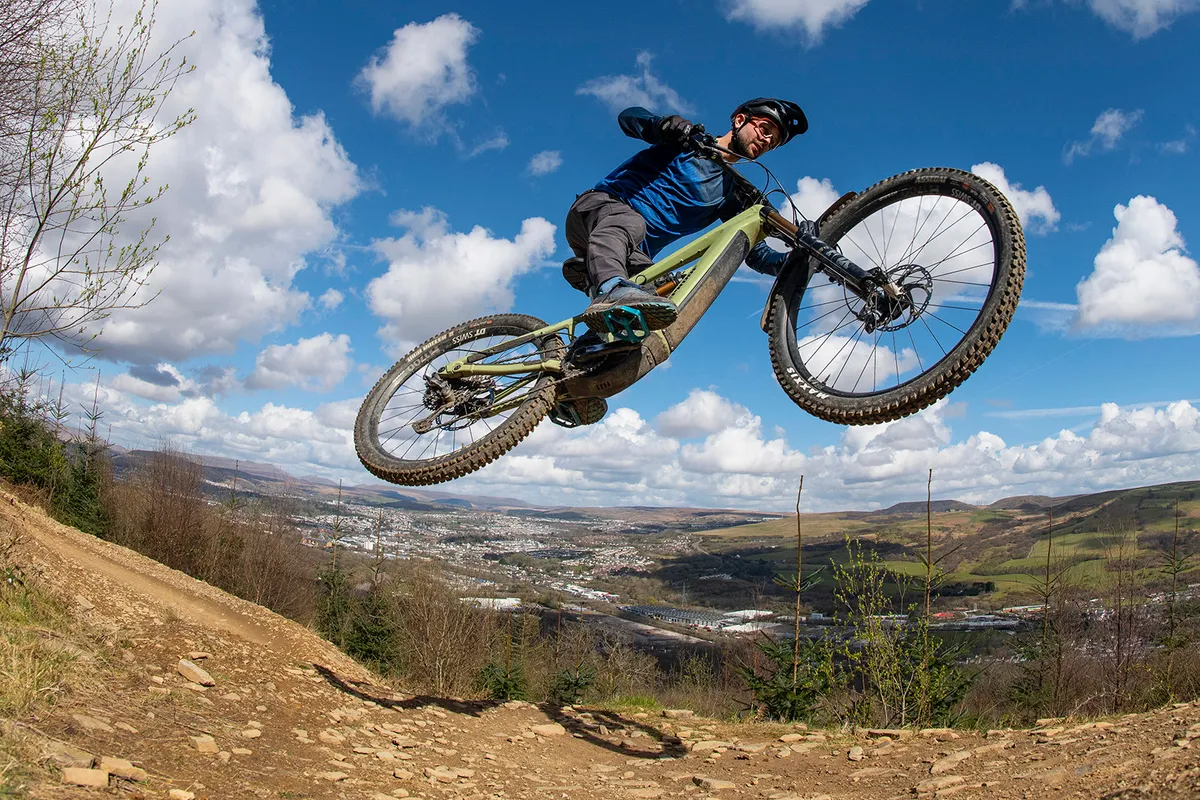
I found I could just jump on the Megawatt and ride it without having to adapt to any quirks or anomalies. This made it exceptionally easy to hit the trails and ride quickly with little effort.
In that respect, it totally defies its weight and travel until you need it, when you’ll be able to rely on it to pull you through chunky terrain without drama.
eMTB Bike of the Year 2022 | How we tested
Despite this being the inaugural edition of eMTB Bike of the Year, we’ve got years of experience testing many of the best electric mountain bikes on the market to their limits
The majority of testing for eMTB Bike of the Year happened in Scotland’s Tweed Valley, home to the legendary Glentress trail centre, Golfie enduro tracks and Innerleithen downhill runs.
This broad range of terrain is representative of what a modern electric mountain bike should be able to handle – whether that’s gravity-fuelled laps on downhill tracks, epic enduro missions with long descents or gruelling trail rides with hours in the saddle.
To win this year’s test, we were looking for a bike that offered the best all-round package with the fewest compromises – a bike able to perform when faced with every type of riding we could throw at it.
In an ode to a bike tester’s cliché, the best eMTB on test had to descend like a downhill bike, pedal and climb like a cross-country bike and be as comfortable to ride as an enduro bike.
Choosing a winner came down to the wire where the second and first place bikes swapped positions more times than we checked our tyre and shock pressures.
Our 2022 eMTB Bike of the Year contenders are:
- Giant Reign E+ 1
- Mondraker Level R
- Saracen Ariel 50E Elite
- Scott Ransom eRIDE 910
- Specialized Turbo Levo Comp Alloy
- Whyte E-180 RS v3
- YT Decoy Core 4
Thanks to…
Thanks to our sponsors MET Helmets, Bluegrass Protection and BikePark Wales for their support in making Bike of the Year happen.
Product
| Brand | nukeproof |
| Price | 7000.00 GBP |
| Weight | 24.5200, KILOGRAM (L) - without pedals |
Features
| Fork | Fox 38 Factory GRIP2 EVOL, 170mm (6.7in) travel |
| br_stem | Nukeproof Horizon, 50mm |
| br_chain | Shimano XT M8100 |
| br_frame | Alloy, 170mm (6.7in) travel |
| br_motor | Shimano EP8/Shimano BT-E8036 630Wh/Shimano SC-EM800 |
| Tyres | Maxxis Assegai 3C Maxx Terra DoubleDown TR WT 29x2.5in (f), Maxxis High Roller II 3C Maxx Terra DoubleDown TR WT 27.5x2.5in (r) |
| br_brakes | Shimano XT M8120, 203/203mm rotors |
| br_cranks | Shimano XT M8100, 34t |
| br_saddle | Nukeproof Horizon Enduro |
| br_wheels | DT Swiss H 1700 |
| br_headset | ACROS AZX-589R1 |
| br_shifter | Shimano XT M8100 |
| br_cassette | Shimano XT M8100, 10-51t |
| br_seatpost | Bikeyoke Divine (dropper) |
| br_gripsTape | Nukeproof Sam Hill Signature |
| br_handlebar | Nukeproof Horizon V2, 800mm |
| br_rearShock | Fox Float X2 Factory |
| br_availableSizes | S, M, L, XL, XXL |
| br_rearDerailleur | Shimano XT M8100 (1x12) |
